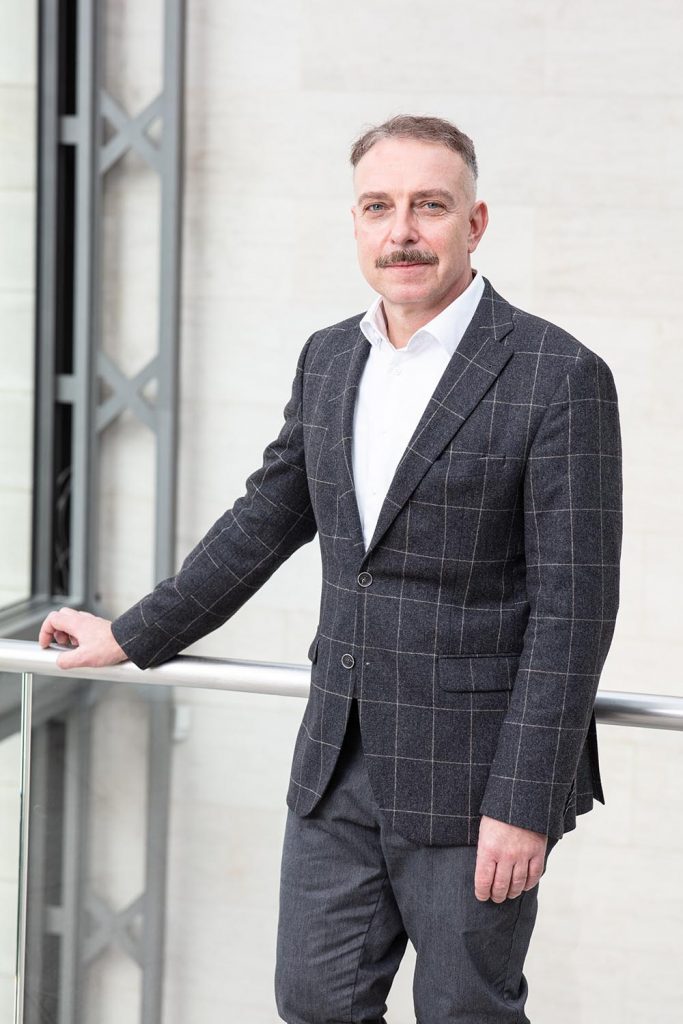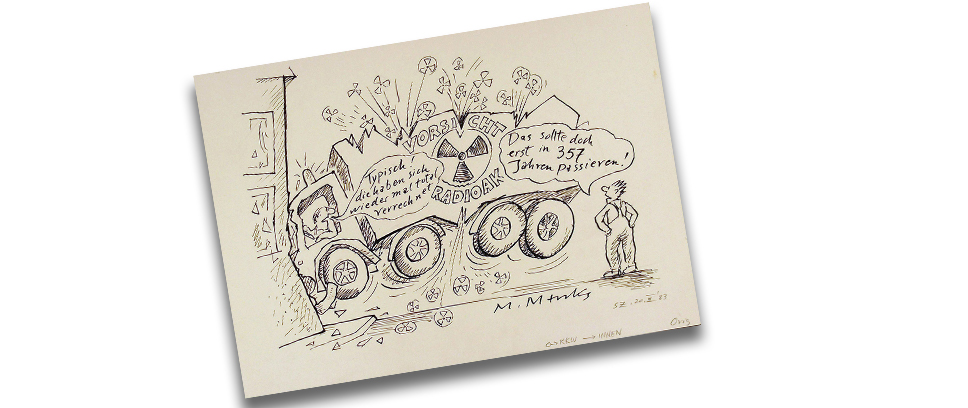
Marie Marcks Centenary
Wolfgang Cortjaens and Mario Russo | 25 August 2022
Marie Marcks would have turned 100 today. In 2007, the DHM acquired 100 original sheets directly from the artist for its Collection of Applied Art and Graphics. Chief custodian of Applied Art and Graphics, Wolfgang Cortjaens, and museum collection manager Mario Russo present a brief introduction to the life and work of the caricaturist.
“In the middle of the hyperinflation, when 1 carrot cost 10,000 marks and my mother was used to accepting coal briquettes as payment for the lessons she gave,
I was born in Bethanien- Krankenhaus.
Today it’s an artists’ colony in Kreuzberg.
And where is Kreuzberg? Well, everyone knows that: in Berlin.”
These are the opening words to Marie Marcks’s 1984 comic book1 “Marie, es brennt!” (which translates as: “Marie, it’s on fire!”), part one of what she called her “Autobiographical Notes”. Part two was released in 1989, titled “Schwarz-weiss und bunt” (“black and white and in colour”).
Marcks grew up in Berlin-Wilmersdorf in a liberal family with artistic leanings: her father was an architect, her mother a graphic designer who gave private art lessons, and her uncle a sculptor. With such a background, one could say Marcks was destined to grow up to become an artist; but that doesn’t mean to say it was a foregone conclusion that Marie Marcks would eventually become the grande dame of political caricature in the Federal Republic of Germany.
Like most girls of her generation, life was initially dominated by the Nazi regime and the war. She was enlisted to assist in the potato harvest in the countryside, to work in the Reich Labour Service, and did a stint in an aircraft engine factory. Back in Berlin, she commenced her studies of architecture, which she continued in Stuttgart in mid-1943. She had a romantic relationship in each of the two cities, leading a polyamorous life even before the term was invented! It would be the first of many “extravagances” during her long and eventful life. Her first daughter was born in Posen (now Poland) in August 1944; Marcks went on to have four more children and raised them as a single parent – an unusual family biography that made her an outlier in the postwar Adenauer era.
During the final chaotic months of the war and the aftermath that followed, Marcks fled westwards, via Berlin and Lower Saxony, to Heidelberg, where her sister lived. She made this picturesque city her new home, and it was here that she also got her first commissions designing posters. It would be several years, however, before, in 1958, she got her first breakthrough: the commission to create the visual design for all publicity relating to West Germany’s contribution to Expo 58, in Brussels.
In the early 1960s she started publishing political cartoons. The first appeared in the magazine “atomzeitalter”, where she had a permanent post as inhouse cartoonist from 1963 to 1965. She then was hired as a regular cartoonist for “Die Süddeutsche Zeitung”, one of Germany’s most prestigious broadsheets, a post she held until 1988, being the only woman on the graphics team. During these decades she also contributed to other major weeklies such as “Stern” and “Der Spiegel” as well as the satirical magazine “Titanic” and the leftist “Vorwärts”. In the mid-1970s, she started publishing her own books.
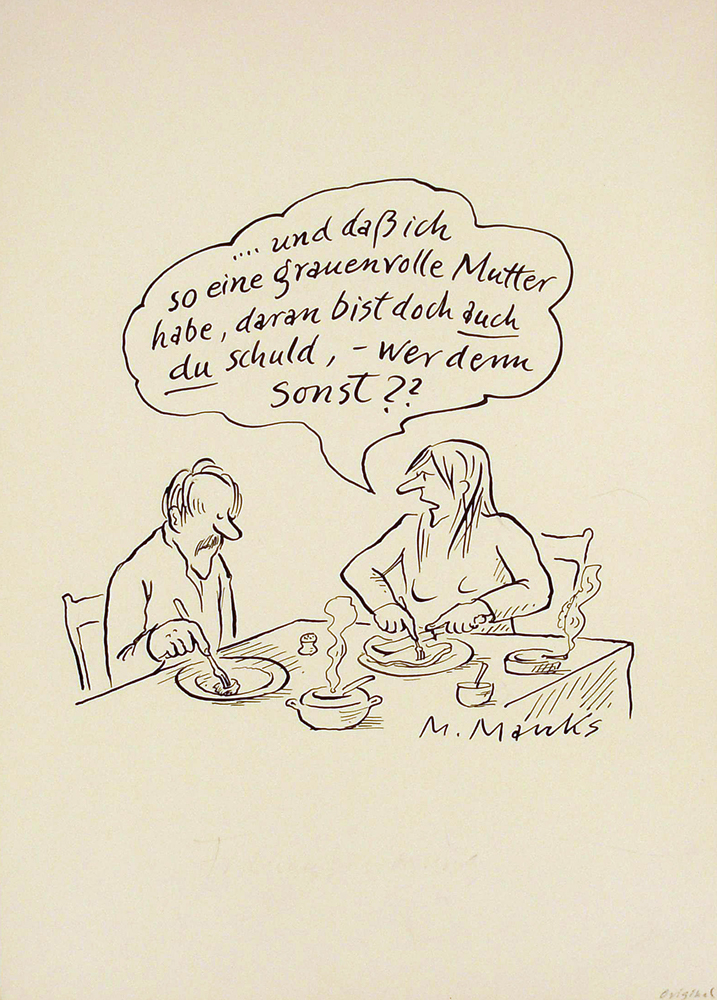
She was the obvious choice for the post of inhouse cartoonist for the feminist magazine “Emma”, but in the end its editors opted for Franziska Becker instead. Recalling that decision, Marcks said in an interview given ten years ago: “Alice Schwarzer [for decades Germany’s most prominent feminist thinker] wanted me for ‘Emma’, but the cartoon I submitted was too ‘male-friendly’ for her taste.”2 This quite suited Marcks, as it was never her intention to limit herself to feminist issues; she wanted to tackle a whole range of political and social topics.
In 2007, the DHM acquired 100 original sheets from the artist herself for the Graphics Collection.3 Poring over these works, one quickly discovers her recurrent core themes, which also reflect the wider political and social discourse of that time: nuclear energy, environmental protection, gender relations, right-wing extremism, to name but a few.
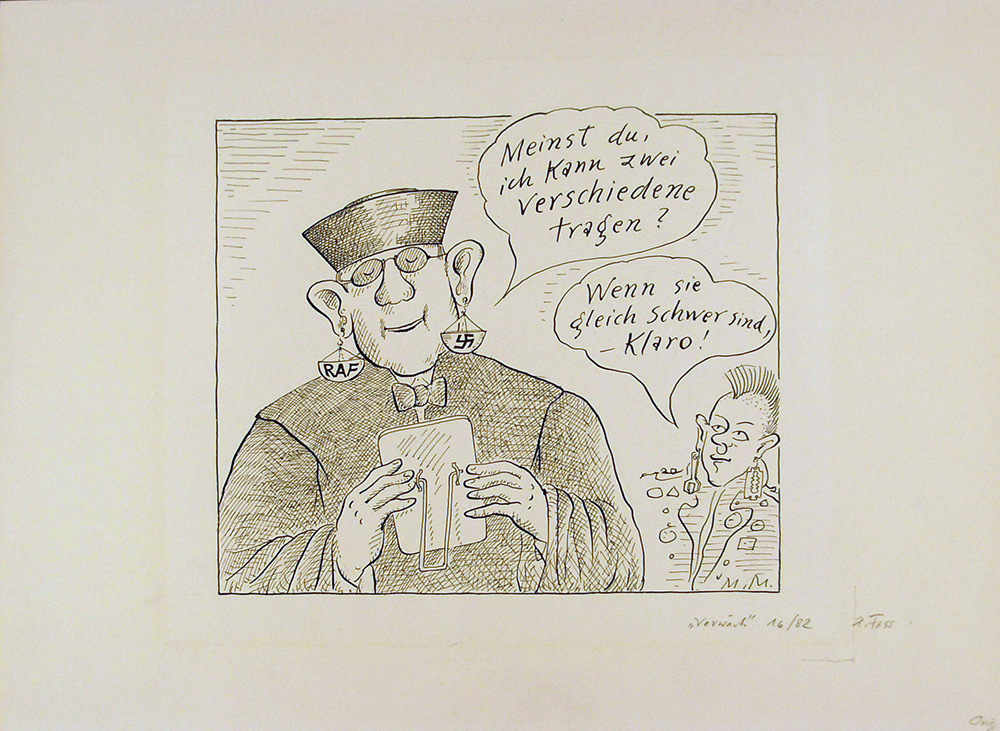
Many of Marcks’s chosen issues seem timeless or have become (highly) topical again. Take, for example, the unresolved, centuries-old conflict over § 218 of the German penal code governing “pregnancy counselling” and abortion, or the ongoing dispute over the “car-friendly” city, or introducing a speed limit on Germany’s autobahns.
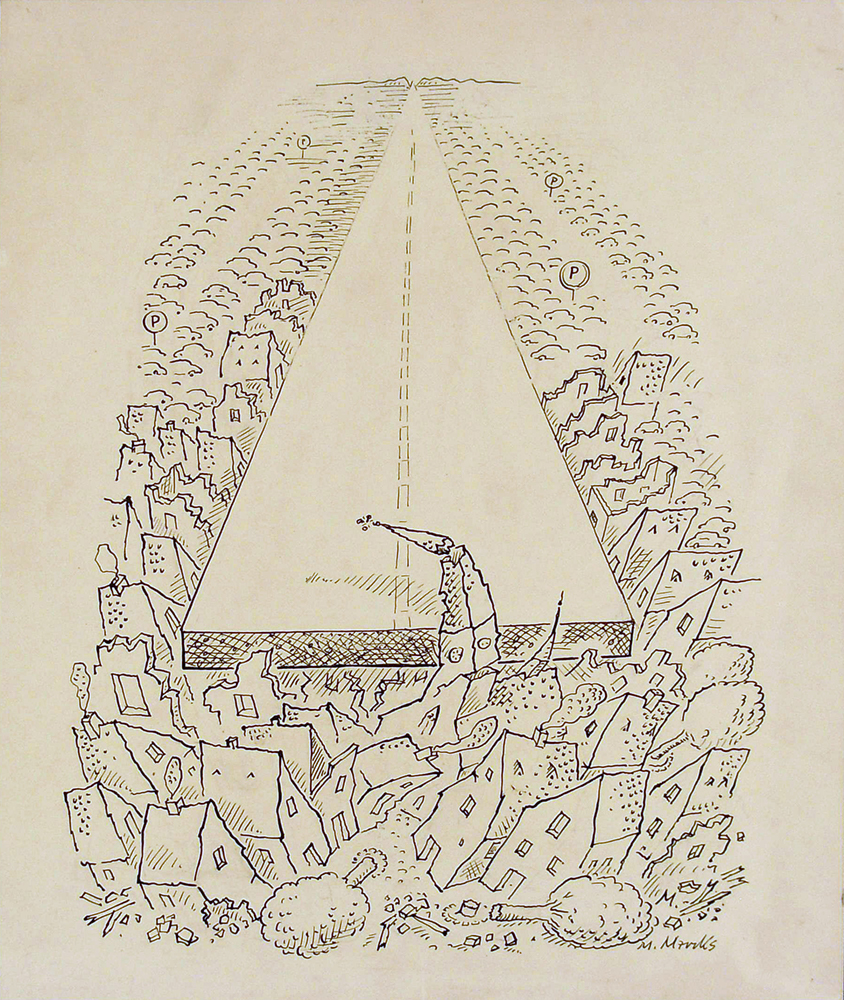
Some caricatures, on the other hand, now seem dated – especially with regard to her choice of depicted stereotypes (such as the caricature on economic migrants).
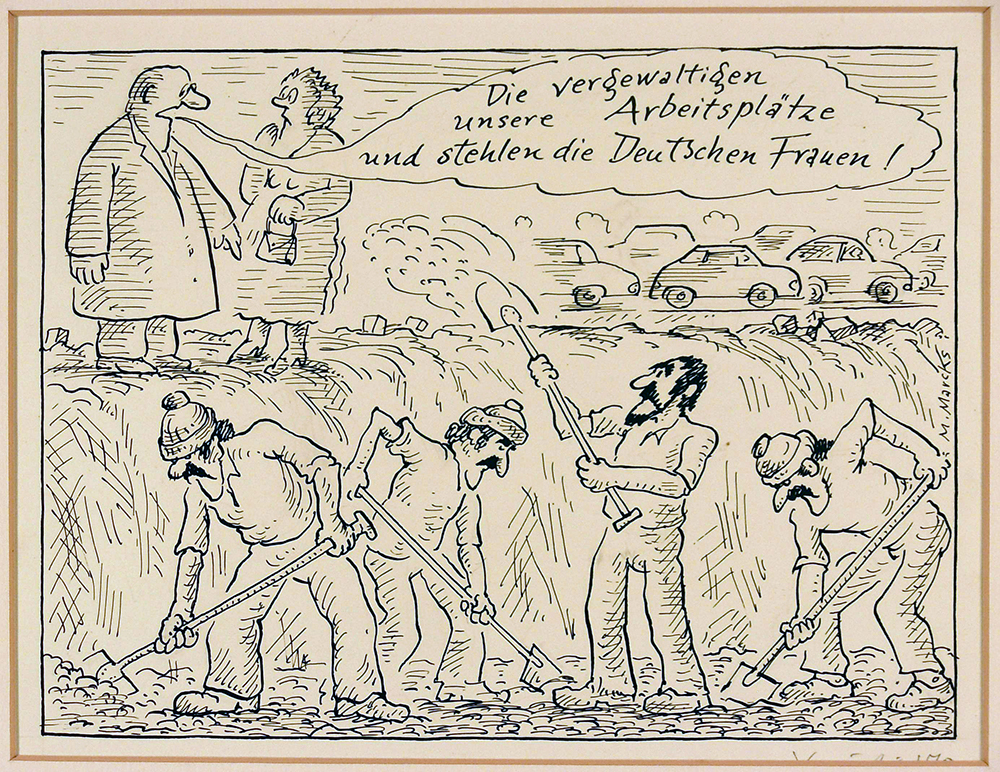
Marck’s graphic style is decidedly simple. Her usually black-and-white snapshots of ordinary life in West Germany are characterized by a pointed and sparing use of line, often limited to the outer contours. She makes only occasional yet conscious use of hatching or touches of colour (especially in commissioned works for press publications).
The importance Marcks attached to spoken phrases and her sometimes coarse humour are on display in her liberal use of speech bubbles, which often take up a sizeable chunk of the cartoon and stand on a par with the drawing. She fills these bubbles with hollow phrases from contemporary politics, thoughtless sayings overheard in bars and pubs, and casual prejudices, all put into the mouths of her long-nosed protagonists. What is striking is the firmness of Marcks’s stance on the political issues of the day, be they local or national.
Stylistically, Marcks initially took inspiration from French caricaturists such as Jean-Maurice Bosc (1924–1973) and Jean-Marc Reiser (1941–1983), who was known for his obscenity and was in many respects a kindred spirit to her. Reiser released the 1978 book “Vive les femmes!”, which visualized the battle of the sexes in cartoon form and even earned praise from feminists for its provocative nature. At times Marcks worked with the illustrators of the New Frankfurt School, including F.K. Waechter (1937–2007) and Chlodwig Poth (1930–2004), sharing a professional and artistic affinity with both by working together on the same magazines, “Pardon” and “Titanic”.
Important female caricaturists and cartoonists such as Franziska Becker (b. 1949) and Katharina Greve (b. 1972) have repeatedly stressed the pioneering work of their older colleague, who remained prolific and active up until her death.
Marie Marcks died in Heidelberg on 7 December 2014, at the age of 92.
References
1) Purists of the so-called “ninth art” would call it a picture book. Others see it as the first graphic novel published in the German-speaking world.
2) Martina Schmidt, “Marie Marcks in der Caricatura: Der Emma war ich zu männerfreundlich”, interview in: Emma, 10 August 2012 (accessed 17.08.2022).
3) Her legacy of drawings was purchased in 2013 by the Deutsches Museum für Karikatur und Zeichenkunst Wilhelm Busch in Hannover.
|
© DHM/Thomas Bruns |
Wolfgang CortjaensWolfgang Cortjaens is head of the Applied Art and Graphics Collection at the Deutsches Historisches Museum. |
Mario RussoMario Russo is museum collection manager of the Applied Art and Graphics Collection at the Deutsches Historisches Museum. |
